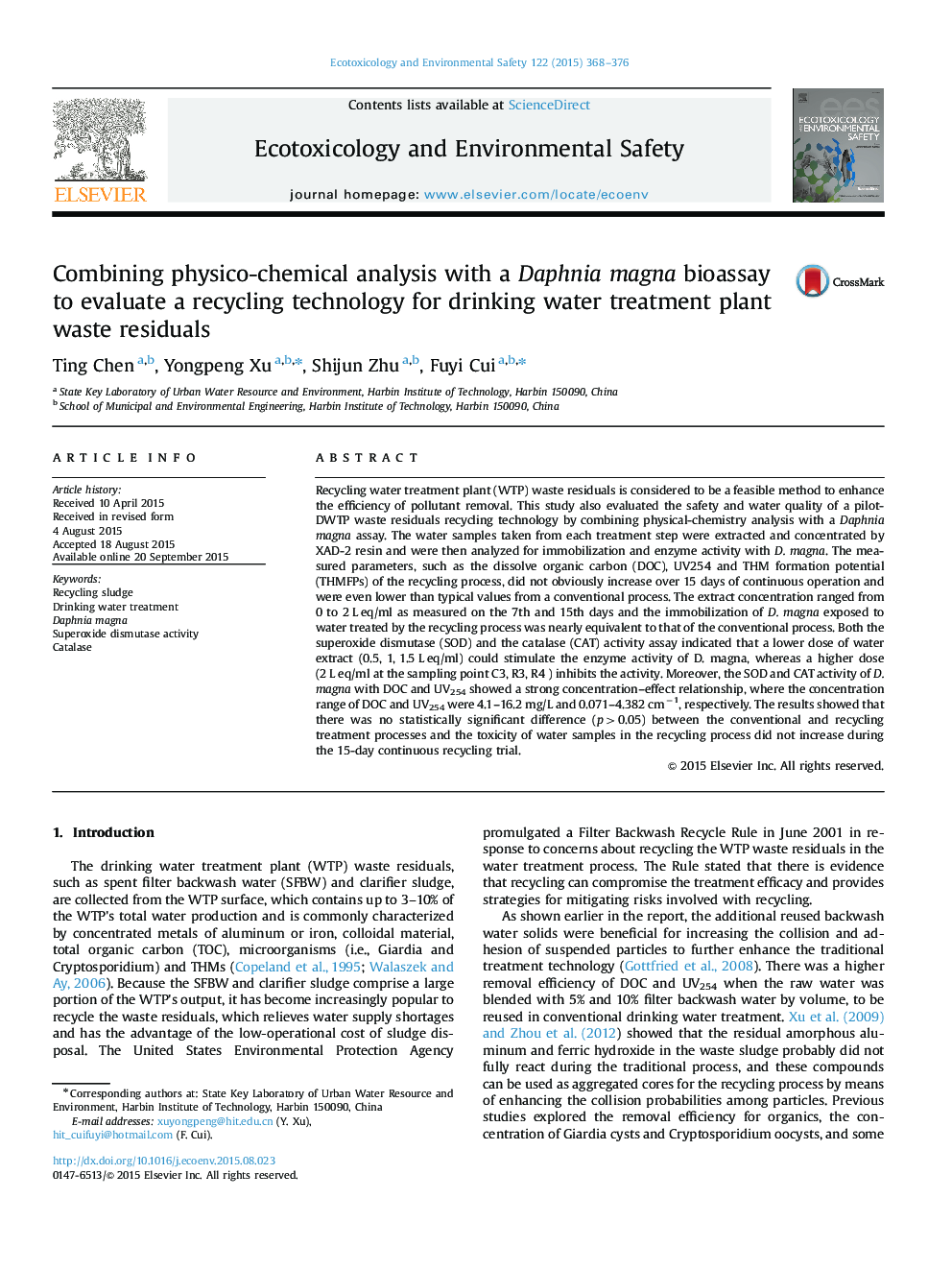| کد مقاله | کد نشریه | سال انتشار | مقاله انگلیسی | نسخه تمام متن |
|---|---|---|---|---|
| 4419530 | 1618941 | 2015 | 9 صفحه PDF | دانلود رایگان |

• The plant test continuously running for 15 days and the waste residuals was recycled.
• The measured parameters of recycling process were lower than conventional process.
• There was no statistically significant difference between two DWT processes.
• The D. magna tests suggest recycling process did not increase the water quality risk.
Recycling water treatment plant (WTP) waste residuals is considered to be a feasible method to enhance the efficiency of pollutant removal. This study also evaluated the safety and water quality of a pilot-DWTP waste residuals recycling technology by combining physical-chemistry analysis with a Daphnia magna assay. The water samples taken from each treatment step were extracted and concentrated by XAD-2 resin and were then analyzed for immobilization and enzyme activity with D. magna. The measured parameters, such as the dissolve organic carbon (DOC), UV254 and THM formation potential (THMFPs) of the recycling process, did not obviously increase over 15 days of continuous operation and were even lower than typical values from a conventional process. The extract concentration ranged from 0 to 2 L eq/ml as measured on the 7th and 15th days and the immobilization of D. magna exposed to water treated by the recycling process was nearly equivalent to that of the conventional process. Both the superoxide dismutase (SOD) and the catalase (CAT) activity assay indicated that a lower dose of water extract (0.5, 1, 1.5 L eq/ml) could stimulate the enzyme activity of D. magna, whereas a higher dose (2 L eq/ml at the sampling point C3, R3, R4 ) inhibits the activity. Moreover, the SOD and CAT activity of D. magna with DOC and UV254 showed a strong concentration–effect relationship, where the concentration range of DOC and UV254 were 4.1–16.2 mg/L and 0.071–4.382 cm−1, respectively. The results showed that there was no statistically significant difference (p>0.05) between the conventional and recycling treatment processes and the toxicity of water samples in the recycling process did not increase during the 15-day continuous recycling trial.
Recycling water treatment plant (WTP) waste residuals is considered to be a feasible method to enhance the efficiency of pollutant removal. Combining physical-chemistry analysis with a Daphnia magna assay to evaluate a recycling technology for drinking water treatment plant waste residuals. The Immobilization, SOD and CAT of D. magna tests suggest that recycling process did not increase the water quality risk, contrasting to traditional process.Figure optionsDownload as PowerPoint slide
Journal: Ecotoxicology and Environmental Safety - Volume 122, December 2015, Pages 368–376